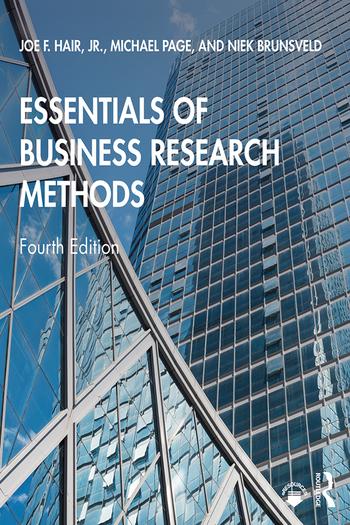Answered step by step
Verified Expert Solution
Question
1 Approved Answer
4. Discussion and conclusion 7 Electronic copy available at: https://ssrn.com/abstract=3831513 South African SMMEs were formally recognised by the national government to assist with creating


4. Discussion and conclusion 7 Electronic copy available at: https://ssrn.com/abstract=3831513 South African SMMEs were formally recognised by the national government to assist with creating jobs, the alleviate poverty, and boosting the national economy (Chimucheka, 2013; Amoros & Moska, 2016; Bruwer et al., 2018). Despite the fact that South African SMMEs are actively supported by the national government (Bruwer, 2016), these business entities have been found to have very weak sustainability rates (Wiese, 2014). In more recent times, the latter transpires to a statistic of 75% of South African SMMEs having to shut their doors operating for less than 36 months (Amoros & Moska, 2016; Ligthelm, 2016). Over the years, the weak South African SMME sustainability has been pinned on both internal factors (those factors over which SMME management has reasonable control) and external factors (those factors over which SMME management has little and/or no control) (Brendon, 2017; Masama & Bruwer, 2018; Serame, 2019). A major external factor is the limited supply of electricity; better known as load shedding (Carlsson & Martinson, 2010; Semenya, 2019). Considering Eskom's mandate to supply electricity to all South Africans in a sustainable and efficient manner (Steenkamp et al., 2016), the South African energy supplier was not adequately equipped with those relevant resources required to cater for significant increases in demand for electricity. This view is supported by the commenced of load shedding during 2008 (Rankin & Rosseau, 2008; Amusa et al., 2009; Kohler, 2014); as brought about by factors such as corruption, internal mismanagement, design flaws in power stations, lack of sufficient emergency diesel, and the lack of maintenance on electricity supply infrastructure (Carlsson & Martinson, 2016; Kusakana, 2019; Winkler et al, 2020). To make matters more perplexing, these factors were known to Eskom's management as they were confirmed to be true by relevant spokespersons (Ateba et al., 2019). Using the above as a basis, it appears that the factors which led to the implementation of load shedding were purposefully neglected and/or left unmanaged by Eskom management. This observation stems from the fact that Eskom management was aware of these factors and may have been aware of these factors before the commencement of load shedding. Also, as of December 2019, Eskom introduced load shedding Stage 6 where up to 6 000 MW of electricity was shed on a six-hour-rotational-basis (Du Vegane, 2020). Since then, research suggests that South Africa's volatile, intermitted electricity supply has caused economic damages to the tune of US$65.7 million, per day. Since most South African SMMEs are dependent on electricity to operate, it is not surprising that most South African SMMEs cannot operate when load shedding occurs (Phiri & Kabubi, 2017). To place the latter in perspective, it should be noted that 97% of all operating South African business entities are classified as SMMES (Brendon, 2016; Viljoen & Struweg, 2016). During times where business operations cannot be executed, potential income and cash flow are lost; adversely impacting the profitability, liquidity and efficiency of these business entities (Semenya, 2019). Besides, those South African SMMEs that have sufficient financial resources at their disposal need to undergo expenditure to acquire alternative solutions to electricity (e.g. acquiring generators, and inverters) to remain operational resulting in the diminishing of these business entities solvency (and liquidity, in some instances) (Carlsson & Martinson, 2010; Van Niekerk, 2020). For the sake of contextualisation, when the emphasis is placed on the economic landscape of South Africa, it becomes apparent that it is not conducive for businesses to operate it, including that of SMMES (Bruwer et al., 2020). Before the start of COVID-19 - specifically between 2018 and 2019 the South African GDP shrunk by US$16.3 billion, the South African GDP per capita shrunk by US$378.73, and unemployment in South Africa effectively increased by 2.07% (translating to an increase of 1 419 139 unemployed citizens). In quintessence, the South African economic landscape can best be described as "harsh"; a breeding ground for an array of risks to realise (Bruwer & Van Den Berg, 2018). From the research conducted, load shedding appears to have an adverse influence on the profitability, liquidity, solvency and efficiency of South African SMMEs, at least in a theoretical dispensation. The extent of this influence is unknown and serves as an avenue for further research. Also, considering the conditions in which South African SMMEs have to operate, there is a need to assess the feasibility of a government insurance programme for South African SMMEs that are formally registered, solely for the claiming of business expenditure caused by load shedding (e.g. daily wages, and the replacement and/or repairing of equipment damaged by electrical surges).
Step by Step Solution
There are 3 Steps involved in it
Step: 1

Get Instant Access to Expert-Tailored Solutions
See step-by-step solutions with expert insights and AI powered tools for academic success
Step: 2

Step: 3

Ace Your Homework with AI
Get the answers you need in no time with our AI-driven, step-by-step assistance
Get Started


